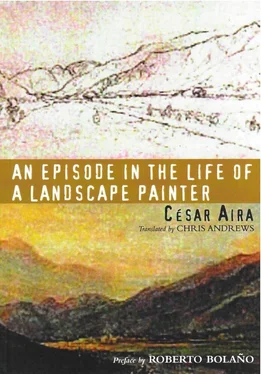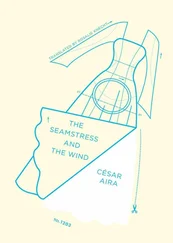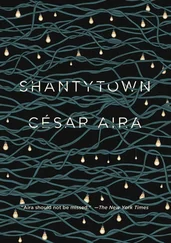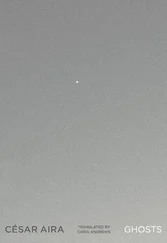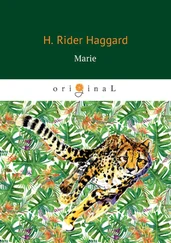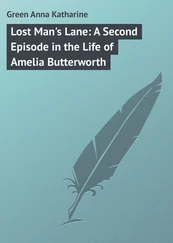Cesar Aira - An Episode in the Life of a Landscape Painter
Здесь есть возможность читать онлайн «Cesar Aira - An Episode in the Life of a Landscape Painter» весь текст электронной книги совершенно бесплатно (целиком полную версию без сокращений). В некоторых случаях можно слушать аудио, скачать через торрент в формате fb2 и присутствует краткое содержание. Год выпуска: 2006, Издательство: New Directions, Жанр: Современная проза, на английском языке. Описание произведения, (предисловие) а так же отзывы посетителей доступны на портале библиотеки ЛибКат.
- Название:An Episode in the Life of a Landscape Painter
- Автор:
- Издательство:New Directions
- Жанр:
- Год:2006
- ISBN:нет данных
- Рейтинг книги:5 / 5. Голосов: 1
-
Избранное:Добавить в избранное
- Отзывы:
-
Ваша оценка:
- 100
- 1
- 2
- 3
- 4
- 5
An Episode in the Life of a Landscape Painter: краткое содержание, описание и аннотация
Предлагаем к чтению аннотацию, описание, краткое содержание или предисловие (зависит от того, что написал сам автор книги «An Episode in the Life of a Landscape Painter»). Если вы не нашли необходимую информацию о книге — напишите в комментариях, мы постараемся отыскать её.
An Episode in the Life of a Landscape Painter
An Episode in the Life of a Landscape Painter — читать онлайн бесплатно полную книгу (весь текст) целиком
Ниже представлен текст книги, разбитый по страницам. Система сохранения места последней прочитанной страницы, позволяет с удобством читать онлайн бесплатно книгу «An Episode in the Life of a Landscape Painter», без необходимости каждый раз заново искать на чём Вы остановились. Поставьте закладку, и сможете в любой момент перейти на страницу, на которой закончили чтение.
Интервал:
Закладка:
But looking back one last time, the grandeur of the Andes reared, wild and enigmatic, excessively wild and enigmatic. For a few days now, descending steadily, they had felt an exhausting heat closing around them. While his soul dreamt on, contemplating that universe of rock from the last lookout, Rugendas's body was bathed in sweat. A wind at high altitude stripped tufts of snow from the peaks and flung them towards the toiling painters, like a devoted servant bringing cones of vanilla ice cream to refresh them.
The landscape revealed by this backward glance revived old doubts and crucial quandaries. Rugendas wondered if he would be able to make his way in the world, if his work, that is, his art, would support him, if he would be able to manage like everyone else… So far he had, and comfortably, but that was due in part to the energy of youth and the momentum he had acquired through his training at the Academy and elsewhere. Not to mention good luck. He was almost sure that he would not be able to keep it up. What did he have to fall back on? His profession, and practically nothing else. And what if painting failed him? He had no house, no money in the bank, and no talent for business. His father was dead, and for years he had been wandering through foreign lands. This had given him a peculiar perspective on the argument that begins "If other people can do it…" All the people he came across, in cities or villages, in the jungle or the mountains, had indeed managed to keep going one way or another, but they were in their own environments; they knew what to expect, while he was at the mercy of fickle chance. How could he be sure that the physiognomic representation of nature would not go out of fashion, leaving him helpless and stranded in the midst of a useless, hostile beauty? His youth was almost over in any case, and still he was a stranger to love. He had ensconced himself in a world of fables and fairy tales, which had taught him nothing of practical use, but at least he had learnt that the story always goes on, presenting the hero with new and ever more unpredictable choices. Poverty and destitution would simply be another episode. He might end up begging for alms at the door of a South American church. No fear was unreasonable, given his situation.
These reflections occupied pages and pages of a letter to his sister Luise in Augsburg, the first letter he wrote from Mendoza.
For suddenly there they were in Mendoza, a pretty town with tree-lined streets, the mountains within arms reach and skies so immutably blue they were boring. It was midsummer; the locals, stunned by the heat, extended their siestas until six in the evening. Luckily the vegetation provided plenty of shade; the foliage filled the air with oxygen, so breathing, when possible, was very restorative.
Armed with letters of introduction from Chilean friends, the travelers stayed at the house of the attentive and hospitable Godoy de Villanueva family. A large house overshadowed by trees, with an orchard and various little gardens. Three generations inhabited the ancestral home in harmony, and the smaller children rode around on tricycles, which Rugendas duly sketched in his notebooks; he had never seen them before. Those were his first Argentinean sketches, portents of an interest in vehicles that would soon develop unexpectedly.
They spent a delightful month in and around Mendoza and its environs. The locals bent over backwards to welcome the distinguished visitor, who, invariably accompanied by Krause, made the obligatory excursions to the ranges (which were no doubt more interesting for travelers who had come from the other direction), toured the neighboring estates and generally began to soak up the spirit of Argentina, so similar to Chile in that town near the border, and yet, even there, so different. Mendoza was, in effect, the starting point for the long eastward voyage across the pampas to the fabled Buenos Aires, and that gave it a special, unique character. Another notable feature was that all the buildings in the town and the surrounding country looked new; and so they were, since earthquakes ensured that all man-made structures were replaced approximately every five years. Rebuilding stimulated the local economy. Comfortably riding the seismic activity, the ranches supplied the Chilean markets, exploiting the early maturation of the cattle, speeded by the dangers emanating from the underworld. Rugendas would have liked to depict an earthquake, but he was told that it was not a propitious time according to the planetary clock. Nevertheless, throughout his stay in the region, he kept secretly hoping he might witness a quake, though he was too tactful to say so. In this respect, and in others, his desires were frustrated. Prosaic Mendoza held promises that, for one reason or another, were not fulfilled and which, in the end, prompted their departure.
His other cherished dream was to witness an Indian raid. In that area, they were veritable human typhoons, but, by their nature, refractory to calendars and oracles. It was impossible to predict them: there might be one in an hour's time or none until next year (and it was only January). Rugendas would have paid to paint one. Every morning of that month, he woke up secretly hoping the great day had come. As in the case of the earthquake, it would have been in poor taste to mention this desire. Dissimulation made him hypersensitive to detail. He was not so sure that there was no forewarning. He questioned his hosts at length, supposedly for professional reasons, about the premonitory signs of seismic activity. It seemed they appeared only hours or minutes before the quake: dogs spat, chickens pecked at their own eggs, ants swarmed, plants flowered, etc. But there was no time to do anything. The painter was convinced that an Indian raid would be anticipated by equally abrupt and gratuitous changes in the cultural domain. But he did not have the opportunity to confirm this intuition.
Despite all the delays they allowed themselves, and their habit of letting nature encourage and justify their lingering, it was time to move on. Not only for practical reasons in this case, but also because, over the years, the painter had gradually constructed a personal myth of Argentina, and after a month spent on the threshold, the pull of the interior was stronger than ever.
A few days before their departure, Emilio Godoy organized an excursion to a large cattle ranch ten leagues south of the town. Among the picturesque sites they visited on the trip was a hilltop from which they had a panoramic view of forests and ranges stretching away to the south. According to their host, it was from those wooded corridors that the Indians usually emerged. They came from that direction, and in pursuit of them, on a punitive expedition after a raid, the ranchers of Mendoza had glimpsed astonishing scenes: mountains of ice, lakes, rivers, impenetrable forests. "That's what you should be painting…" It was not the first time he had heard this sentence. People had been repeating it for decades, wherever he went. He had learnt to be wary of such advice. How did they know what he should paint? At this point in his career, within reach of the vast emptiness of the pampas, the art most authentically his own was, he felt, drawing him in the opposite direction. In spite of which, Godoy's descriptions set him dreaming. In his imagination, the Indians' realm of ice was more beautiful and mysterious than any picture he was capable of painting.
Meanwhile, what he was capable of painting took a new and rather unexpected, form. In the process of hiring a guide, he came into contact with a supremely fascinating object: the large carts used for journeys across the pampas.
These were contraptions of monstrous size, as if built to give the impression that no natural force could make them budge. The first time he saw one, he gazed at it intently for a long time. Here, at last, in the cart's vast size, he saw the magic of the great plains embodied and the mechanics of flat surfaces finally put to use. He returned to the loading station the next day and the day after, armed with paper and charcoal. Drawing the carts was at once easy and difficult. He watched them setting off on their long voyages. Their caterpillar's pace, which could only be measured in the distance covered per day or per week, provoked a flurry of quick sketches, and perhaps this was not such a paradox in the work of a painter known for his watercolors of hummingbirds, since extremes of movement, slow as well as quick, have a dissolving effect. He set aside the problem of the moving carts — there would be plenty of opportunities to observe them in action during the journey — and concentrated on the unhitched ones.
Читать дальшеИнтервал:
Закладка:
Похожие книги на «An Episode in the Life of a Landscape Painter»
Представляем Вашему вниманию похожие книги на «An Episode in the Life of a Landscape Painter» списком для выбора. Мы отобрали схожую по названию и смыслу литературу в надежде предоставить читателям больше вариантов отыскать новые, интересные, ещё непрочитанные произведения.
Обсуждение, отзывы о книге «An Episode in the Life of a Landscape Painter» и просто собственные мнения читателей. Оставьте ваши комментарии, напишите, что Вы думаете о произведении, его смысле или главных героях. Укажите что конкретно понравилось, а что нет, и почему Вы так считаете.
